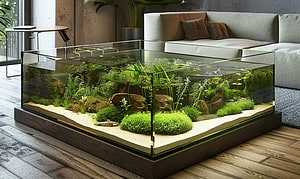The age old kitchen and master bathroom remodels still pay dividends, but another area new home owners are exploring is lighting. Millennial home buyers want the package deal when it comes to buying a home. That means energy efficient fixtures, fully connected everything and a truly modern living experience. Lighting has become a central feature in that infrastructure.
Lighting services now help homeowners build smart infrastructure into the home, using light sources as the hub, for a cohesive experience in every room. Every control, from color to intensity, is now available in your smartphone thanks to a variety of interconnected fixtures.
Here are some ideas on how to embrace the newest trends, along with the basics to get you started.
Basics
The Department of Energy defines lighting basics as:
- Quantity: measured in lumens, quantity refers to exactly how bright the space is.
- Quality: how much energy is consumed versus output, color temperature, glare and how the light alters existing colors all factor into its quality.
- Use: lighting has a growing number of uses. One popular one is bias lighting, or using light to accent whatever is being viewed on a television or computer screen.
Knowing how you plan to use your lighting helps influence the quantity of light you need which helps determine the quality you should shop for.
Smart Infrastructure
The Phillips Hue system has many competitors, but its feature set is a great example of what a smart system can do. Using an application on your phone, you can change the color and intensity of lighting, set timers and monitor usage.
You can also connect with other systems using external apps, such as “If This Than That” (or IFTTT) to trigger certain things to happen. Want your lighting to tone itself down when it’s time for bed? With IFTTT you can also ask Alexa or Google Home to work alongside your lighting system for even more functionality.

Design Principles
All of this smart functionality is packaged in some cool looking dome lights and fancy gadgetry. It’s important to remember the principles of good design: use lighting to layer the space. Avoid using a one-size-fits-all lighting system that blasts the room with light and bleaches everything out. You get flat shadows and a degradation of color.
Using a variety of lights in a room, sometimes using different temperatures for different times of the day, can offer a unique experience. Especially when these systems are automated. Hidden lighting, sometimes called “accent lighting” is an excellent example of this concept. Use LED strips beneath or above cabinetry to add some ambient glow to the space. The effect becomes useful after dark, when the cooler and more energy efficient lighting does the heavy lifting for moving around at night.
Don’t forget the importance of natural lighting either. Letting natural lighting into the space allows you to save on power, warms the space and provides a sense of openness.
Final Thoughts
Part of the reason lighting is so difficult is because consumers tend to look more at the fixture than the type of lighting it supplies. When you visit your local hardware store, or even a specialty lamps store, you find a group of lights huddled together. No real sense of the kind of light these fixtures cast.
Also, don’t fall into the trap of thinking that every room is lit the same. What you want in the bathroom is very different from the kitchen or the living room.

















